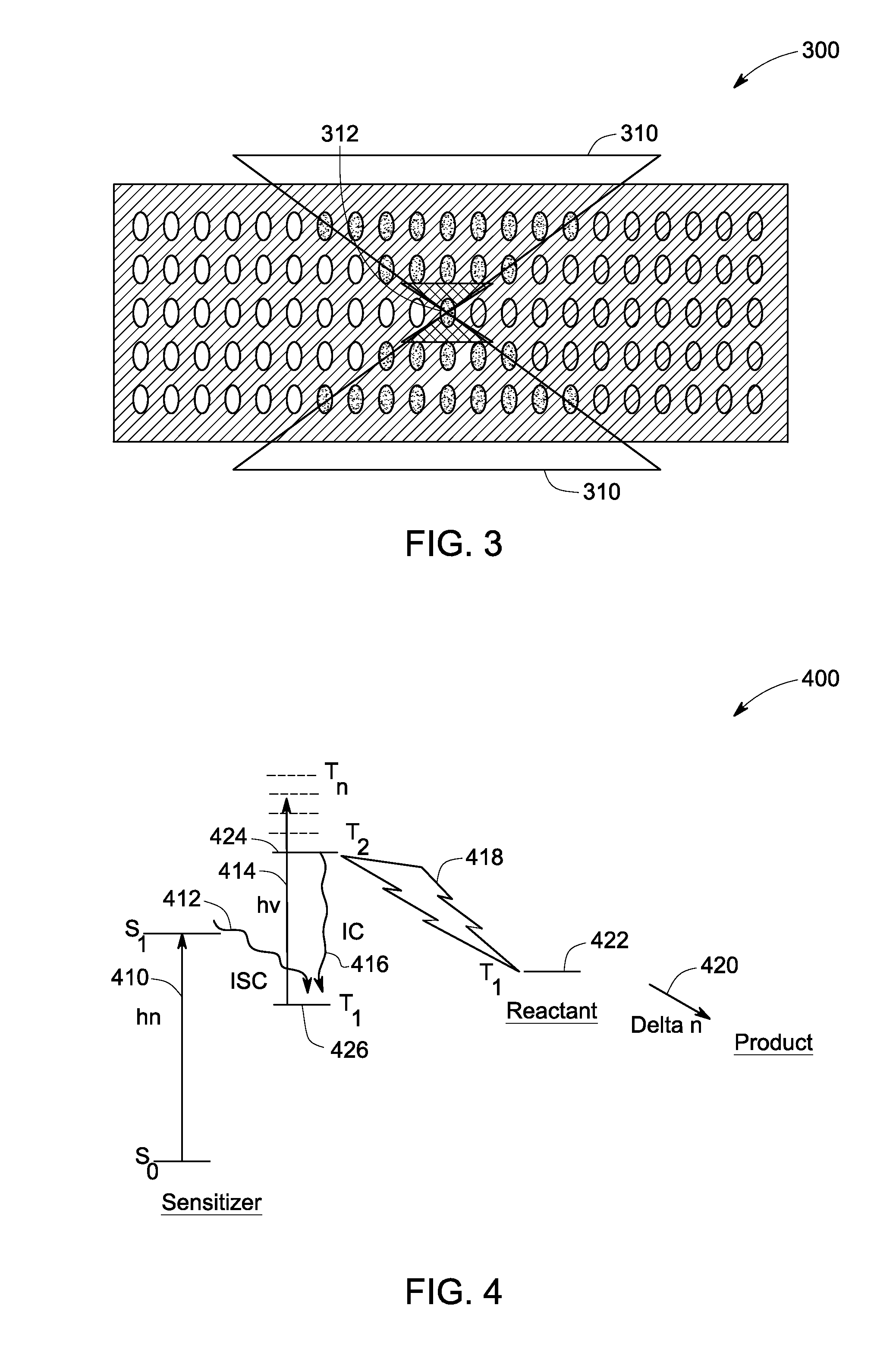Optical data storage media and methods for using the same
a technology which is applied in the field of optical data storage media, can solve the problems that conventional optical data storage media does have limitations
- Summary
- Abstract
- Description
- Claims
- Application Information
AI Technical Summary
Benefits of technology
Problems solved by technology
Method used
Image
Examples
example 1-2 (
E-1 to E-2)
Synthesis of Polyvinyl Alcohol-Appended-with Cinnamoyl Chloride Derivatives
[0060]To a 250 milliliters round bottom flask were added polyvinyl alcohol, 88 percent hydrolysed (1.4 grams, 0.0292 moles repeat unit) and 25 milliliters of N-methyl pyrrolidinone. The resultant mixture was heated to about 80 degrees Celsius under an atmosphere of nitrogen for about 2 hours. The heating resulted in the complete dissolution of polyvinyl alcohol. The resultant mixture was cooled to about 50 degrees Celsius. The cinnamoyl chloride derivatives were added in portions as a solid over a period of about two hours. After the addition was complete the mixture was stirred for about one more hour at about 50 degrees Celsius. The resultant mixture was precipitated into a blender containing 75 milliliters of methanol. The resulting solid was collected by suction filtration then dissolved in 30 milliliters of methylene chloride and again precipitated into 75 milliliters of methanol. The resultin...
example 3-10 (
E-3 to E-10)
Preparation of Polymer Film from Poly Vinyl Alcohol-Appended-with Cinnamoyl Chloride Derivatives Prepared in E-1 and E-2 for use in Quantum Efficiency Studies
[0064]A 2.2 weight percent solution of PV4-MeOCm and PVCm prepared in E-1 and E-2 respectively, independently doped with 0.04 moles triarylmethane dye in tetrachloroethane was prepared. In some examples a mediator was added. The contents were dissolved by heating the solution on a hot plate at about 70 degrees Celsius. The solution was filtered through a 0.45 micrometer Whatman filter. The filtered solution was poured onto a 50 millimeters×25 millimeters microscopic slide and the solution was spin casted on a spin coater at about 2000 revolutions per minute for 30 seconds. Then the slide was dried for about 20 minutes to about 30 minutes in an oven at a temperature of about 70 degrees Celsius. The thickness of the polymer film formed was approximately about 100 nanometers. The dye and the mediator used, and the amou...
example 11 (
E-11)
Preparation of Polymer Film from Poly Vinyl Alcohol-Appended-with Cinnamoyl Chloride Derivatives Prepared in E-1 and E-2 for use in Holographic Studies
[0068]Thick film samples for demonstrating microholograms and recording the reflectivity after writing microholograms were prepared as follows. A 10 weight percent solution of 1 gram of PVCm (prepared in E-2) doped with 0.04 moles triarylmethane dye (for example ethyl violet chloride salt) and 4 weight percent (40 milligrams, with respect to the polymer) of mediator benzophenone in methylene chloride:dichloroethane (9:1) was prepared. The solution was filtered through 0.45 micron Whatman syringe filter. The solution was then solvent casted onto a (5 centimeters×5 centimeters) pyrex glass by containing the solution on to a circular glass rim. The whole of the above set-up was placed on a hot plate set at 45 degrees Celsius. The sample was covered with an inverted glass funnel covering the whole sample and the opening of the tip of...
PUM
| Property | Measurement | Unit |
|---|---|---|
| refractive index change capacity | aaaaa | aaaaa |
| refractive index | aaaaa | aaaaa |
| refractive index change capacity | aaaaa | aaaaa |
Abstract
Description
Claims
Application Information
 Login to View More
Login to View More - R&D
- Intellectual Property
- Life Sciences
- Materials
- Tech Scout
- Unparalleled Data Quality
- Higher Quality Content
- 60% Fewer Hallucinations
Browse by: Latest US Patents, China's latest patents, Technical Efficacy Thesaurus, Application Domain, Technology Topic, Popular Technical Reports.
© 2025 PatSnap. All rights reserved.Legal|Privacy policy|Modern Slavery Act Transparency Statement|Sitemap|About US| Contact US: help@patsnap.com



